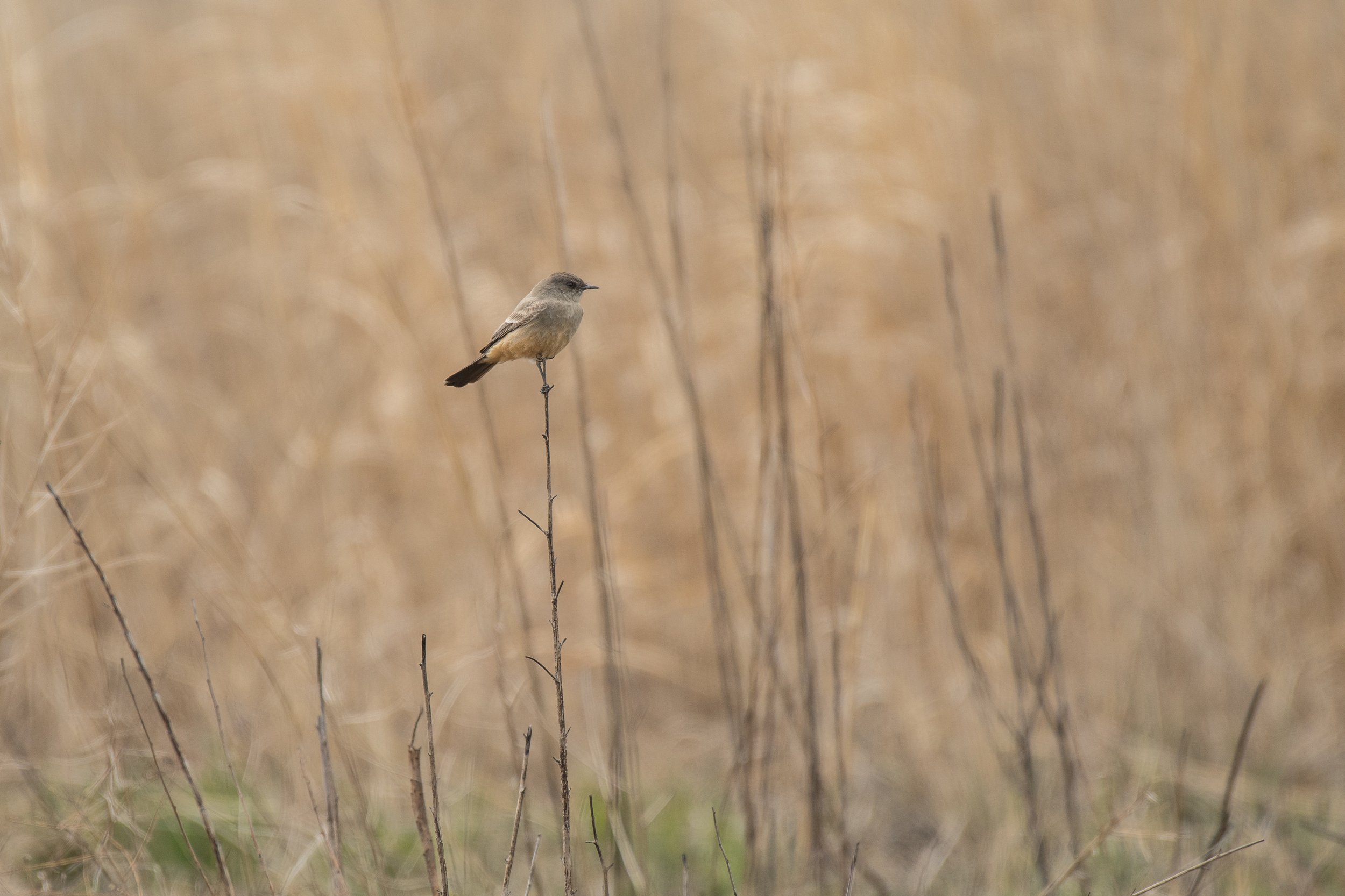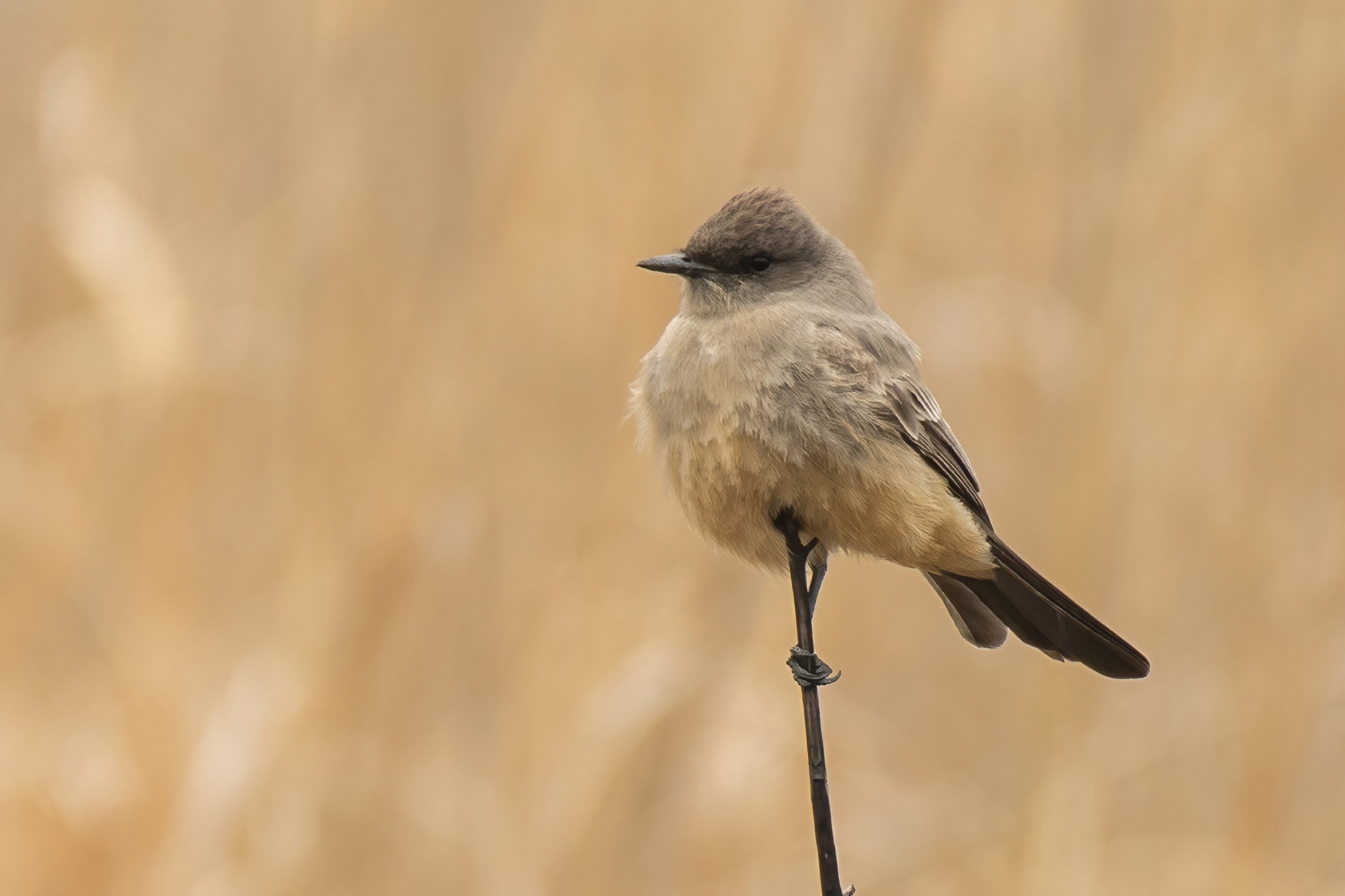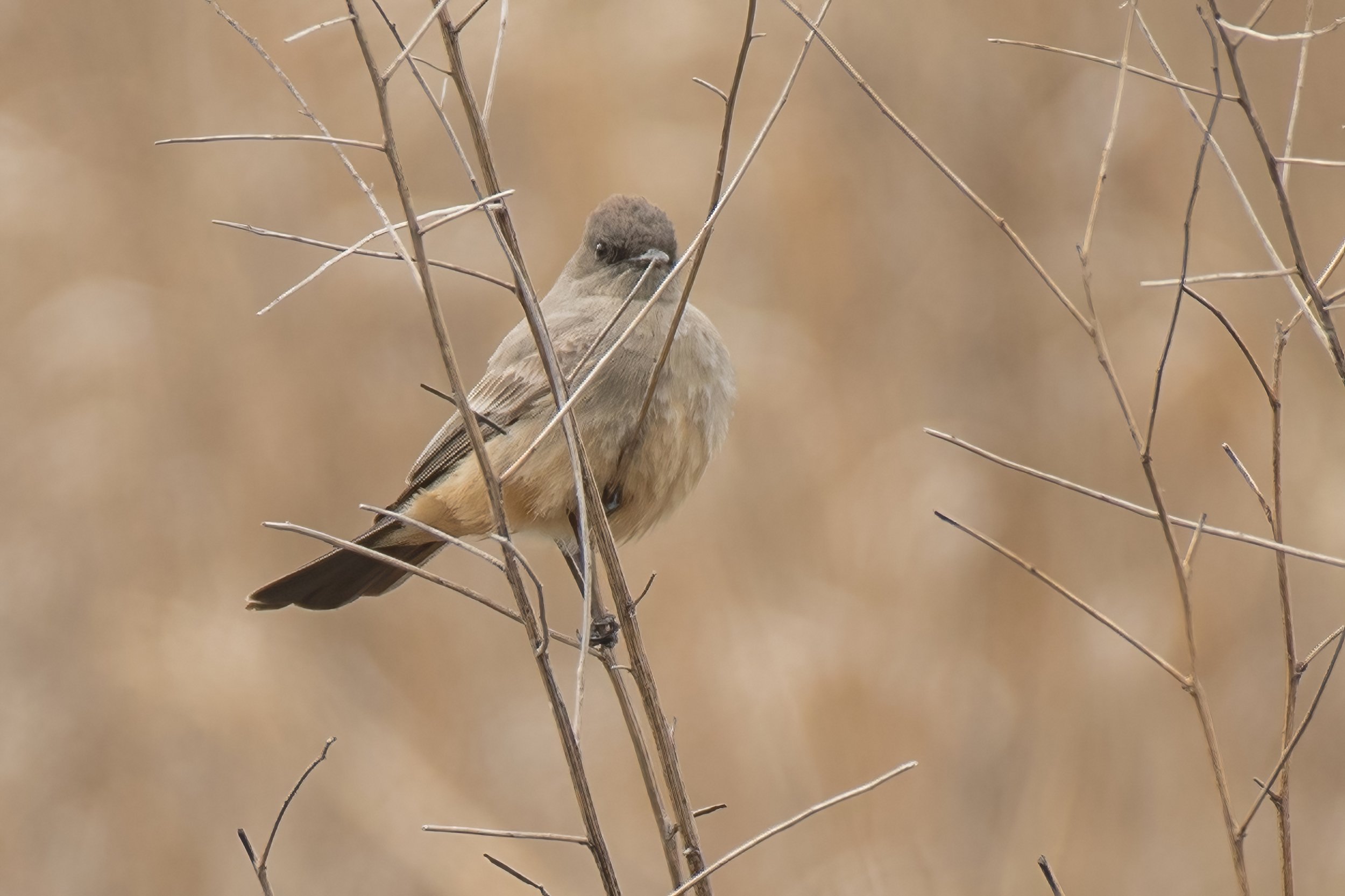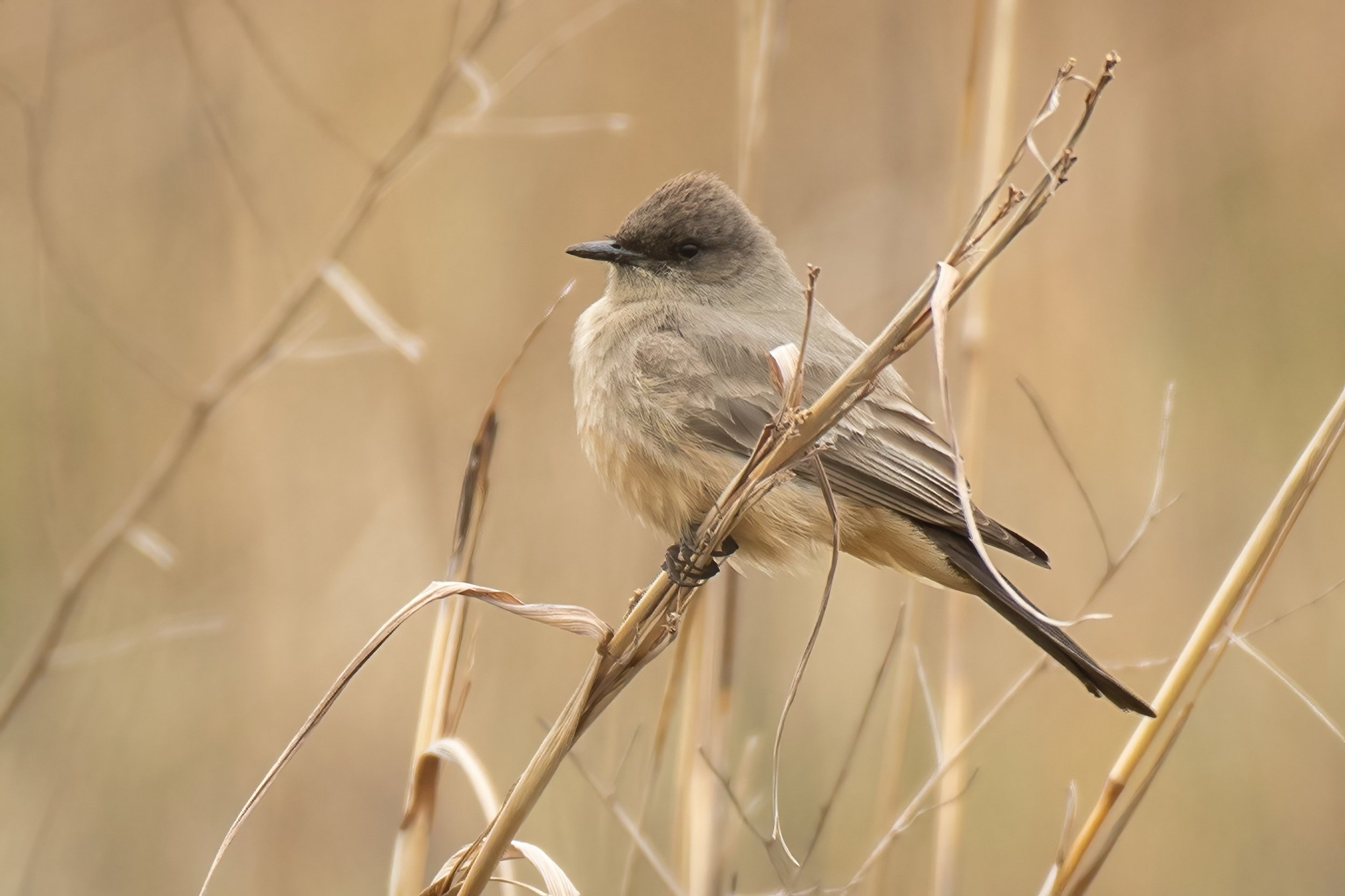Dan's Feathursday Feature: Say's Pheobe
“Look at that bird over there. It’s acting kinda strange,” noted Tony as we walked the old asphalt road that runs the length of Park 566. I glanced over and saw what I assumed was a light-colored robin, bouncing from the ground to the tall, dried grasses and back to the ground again. “Just a robin,” I said. I was not about to be distracted from the task at hand.
It was a nippy afternoon in mid-April. I had met Mike and Tony at the park entrance a few minutes earlier, and we were walking the park to discuss Tony’s ideas for some simple actions the Chicago Park District and their contractor could take to make the park more accessible to birders and other visitors to the park. It’s not often that one gets the chance to spend time like this with the two people responsible for the care of this park that I love. So even when Tony pointed out that the bird was “acting like a kingbird,” I quickly noted the tail feathers had no white on the tips, and just shrugged him off. I was focused on improving birding at the park, and no bird was going to stand in my way.
We walked the length of the park, noting the stubborn continuation of patches of invasive garlic mustard and mugwort, and sharing ideas on where to mow a few pathways through the tall grasses. About an hour later we were almost back to the park entrance when Tony said, “That weird bird is still there.” Park improvement discussion behind me, and able now to shift my focus to this one “weird bird,” I got the binoculars on it and had an it-does-not-compute moment. Definitely not a robin. Tony kept saying it looked like a kingbird, but it was not an Eastern Kingbird. Maybe Western Kingbird? But the belly was ochre, not yellow, and it did not have the cocky profile of a kingbird. The posture and “feel” was more phoebe-ish. Out came the field guide—I patted myself on the back for not forgetting my reading glasses—and a quick search of phoebes told me I was looking at a Say’s Phoebe.
I’m no birding expert, but I knew enough to understand this was a rare sighting. This bird had travelled about 500 miles east of its typical spring/summer range, probably blown in by the strong westerly winds earlier in the week. I got the word out to other birders and waited for the first few to show up so I could help them find the bird, and then I headed for home. It had been a long day.
As far from home as this Say’s Phoebe was, it looked very much in its element at Park 566. The Say’s Phoebe is a flycatcher of the grasslands, perching on low stalks, or fence posts, sallying out to catch an insect in flight, dropping often to the ground to nab bugs there, all the while bobbing its tail, like its cousin, the Eastern Phoebe. The cold wind off Lake Michigan did not bother it in the least. This bird has the distinction of being the flycatcher that nests further north than any other North American flycatcher, breeding as far north as Alaska and Canada’s Yukon territory.
The Say’s Phoebe also has the distinction of being named after a person of distinction by a person of distinction. Thomas Say, known as the father of American entomology, was the first scientist to report this species, during an expedition in 1819 in the Rocky Mountains. The bird was named after Say by the ornithologist Charles Lucien Jules Laurent Bonaparte, 2nd Prince of Canino and Musignano, and nephew of the one and only Napoleon Bonaparte.
But enough with dropping names and listing important dates. When speaking of the Say’s Phoebe, there are just two important dates to remember. One is April 19, 400,000 BCE. There are fossils of the Say’s Phoebe in Arizona and other southwestern states that date back that far. That’s how long this bird has roamed the western grasslands.
The other date to remember is April 19, 2022. That’s when one Say’s Phoebe visited Chicago’s Park 566, on the very same day that naturalists were there to assess the progress of their conservation work. This Say’s Phoebe went in the record books as the two hundred fifty-second bird species to be reported at this lakefront grassland park, and it served as a timely demonstration to the stewards of this park of the fruits of their labor.
Dan's Feathursday Feature is a regular contribution to the COS blog featuring the thoughts, insights and photography of Chicago birder, Dan Lory on birds of the Chicago region.







